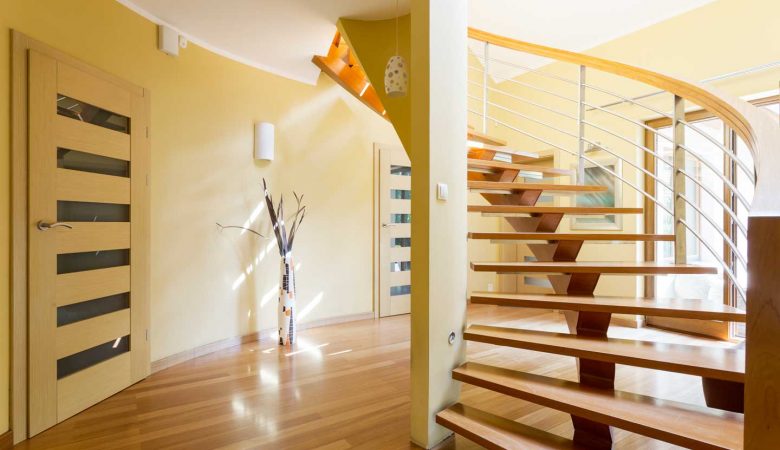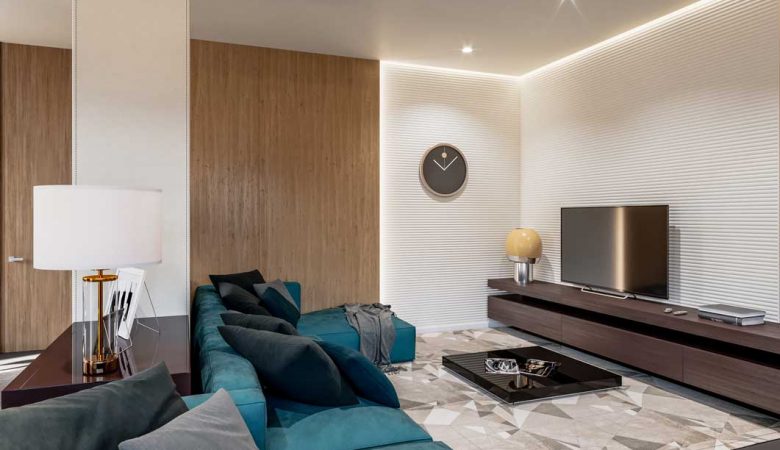10 Tips for Creating a Cozy Living Room
A cozy living room is a perfect retreat from the hustle and bustle of everyday life, providing a warm and inviting space to relax and unwind. Whether you’re entertaining guests or enjoying a quiet evening at home, here are ten tips to help you create a cozy and comfortable living room. 1. Choose Warm Color Palettes Warm colors can make a living room feel inviting and snug. Earthy Tones: Shades of brown, beige, and terracotta create a grounding and warm atmosphere. Warm Neutrals: Soft neutrals like cream, taupe, and warm gray can provide a cozy backdrop while allowing for colorful accents. 2. Layer Textures Incorporating various textures adds depth and warmth to your living room. Soft Furnishings: Use plush throw blankets, cushy pillows, and thick area rugs to create a layered and inviting space. Natural Materials: Incorporate wood, leather, and woven elements to add a tactile and cozy feel. 3. Use Ambient Lighting Lighting plays a crucial role in creating a cozy ambiance. Soft Lighting: Use table lamps, floor lamps, and wall sconces with warm-toned bulbs to create a soft and inviting glow. Dimmer Switches: Install dimmer switches to adjust the lighting according to the mood and time of day. 4. Incorporate Personal Touches Personal items and decor can make your living room feel more homely and comfortable. Photos and Artwork: Display family photos, personal artwork, and cherished mementos to add a personal touch. Books and Magazines: Keep your favorite books and magazines on display for an inviting and lived-in feel. 5. Arrange Furniture for Conversation The way you arrange your furniture can affect the coziness of your living room. Intimate Seating: Arrange seating in a way that encourages conversation and closeness, such as a circular or semi-circular layout. Comfortable Furniture: Choose furniture that is both stylish and comfortable, with plenty of cushions and support. 6. Add Greenery Plants can bring life and warmth to your living room. Indoor Plants: Incorporate a variety of indoor plants to add a natural and calming element. Fresh Flowers: Keep fresh flowers in a vase to add a touch of color and freshness to your space. 7. Use Warm and Cozy Fabrics The fabrics you choose can enhance the cozy feel of your living room. Thick Curtains: Use heavy, lined curtains to add warmth and privacy. Soft Throws and Cushions: Layer sofas and chairs with soft throws and cushions for added comfort and warmth. 8. Create a Focal Point A focal point can draw the eye and create a sense of coziness. Fireplace: If you have a fireplace, make it the centerpiece of your living room. Decorate the mantel with personal items and seasonal decor. Feature Wall: Create a feature wall with artwork, shelves, or a bold paint color to add interest and warmth. 9. Incorporate Scents Pleasant scents can enhance the cozy atmosphere of your living room. Candles: Use scented candles to create a warm and inviting fragrance. Essential Oils: Diffuse essential oils to add a calming and cozy scent to your space. 10. Keep It Clutter-Free A clutter-free space can feel more relaxing and cozy. Storage Solutions: Use stylish storage solutions to keep your living room tidy and organized. Minimal Decor: Avoid overloading the space with too many decorative items. Choose a few meaningful pieces to create a balanced and cozy look. Conclusion Creating a cozy living room is all about combining warmth, comfort, and personal touches. By choosing warm color palettes, layering textures, using ambient lighting, and incorporating personal items and greenery, you can transform your living room into a cozy haven. Remember to arrange furniture for conversation, use warm fabrics, create a focal point, incorporate pleasant scents, and keep the space clutter-free to achieve the perfect cozy living room.
The Power of Accent Lighting in Interior Design
Accent lighting is a powerful tool in interior design that can transform a space, adding depth, drama, and a touch of sophistication. By strategically placing accent lights, you can highlight architectural features, create focal points, and enhance the overall ambiance of a room. Here’s how you can harness the power of accent lighting to elevate your interior design. 1. Highlight Architectural Features Accent lighting can be used to draw attention to the architectural elements of a room, such as columns, arches, or moldings. Wall Washers: These lights are installed close to the ceiling and cast a wide, gentle beam of light down the wall. They can make a room feel larger by highlighting the vertical surfaces. Recessed Spotlights: Perfect for highlighting specific features like a fireplace, alcove, or an exposed brick wall. They provide focused light that accentuates the textures and details of the architecture. 2. Create Focal Points Using accent lighting to create focal points can add visual interest and guide the viewer’s attention to specific areas or objects within a room. Artwork Lighting: Picture lights, track lighting, or recessed spotlights can be used to illuminate artwork, making it stand out and adding a gallery-like feel to your space. Display Cabinets: LED strip lights or puck lights inside glass-fronted cabinets can highlight collections, glassware, or decorative items, creating a captivating display. Feature Walls: Use accent lighting to emphasize a feature wall with unique textures, wallpapers, or murals. This can make the wall a centerpiece of the room. 3. Enhance Ambiance Accent lighting plays a crucial role in setting the mood and enhancing the ambiance of a space. Dimmer Switches: Installing dimmer switches allows you to adjust the intensity of the accent lighting, creating a warm and inviting atmosphere. This is especially effective in living rooms, dining areas, and bedrooms. Up-lighting: Placing lights on the floor and directing them upward can create a dramatic effect, especially when used to highlight plants, sculptures, or architectural details. This technique adds a touch of elegance and can make a room feel more dynamic. Cove Lighting: Installed in recessed ceilings or built into shelves, cove lighting provides indirect light that creates a soft, warm glow. It’s ideal for creating a cozy and intimate ambiance in any room. 4. Add Depth and Dimension Accent lighting can add depth and dimension to a space, making it feel more layered and interesting. Layered Lighting: Combining accent lighting with ambient and task lighting creates a layered effect that adds complexity and richness to a room’s design. This technique ensures that different areas of the room are lit appropriately for various activities while adding visual interest. Shadow Play: Use accent lights to create shadows and highlights that add depth and intrigue. For instance, placing a light behind a piece of furniture or a plant can cast interesting shadows on the wall, adding to the room’s overall aesthetic. 5. Practical Tips for Using Accent Lighting Choose the Right Bulbs: The color temperature of the bulbs you choose can affect the mood of the room. Warm white bulbs (2700K-3000K) are ideal for creating a cozy and inviting atmosphere, while cool white bulbs (3500K-4100K) are better for highlighting features and creating a more contemporary feel. Positioning: Experiment with the positioning of your accent lights to achieve the desired effect. Angle the lights to minimize glare and ensure they highlight the intended features without creating harsh shadows. Balance: Ensure that the accent lighting is balanced with other types of lighting in the room. Too much accent lighting can overwhelm the space, while too little can make the room feel flat and uninspired. Conclusion Accent lighting is a versatile and impactful element of interior design that can elevate the look and feel of any space. By highlighting architectural features, creating focal points, enhancing ambiance, and adding depth and dimension, accent lighting can transform your home into a beautifully illuminated haven. Experiment with different techniques and placements to find the perfect balance that suits your style and enhances your living environment.
How to Choose the Right Colors for Your Bedroom
Choosing the right colors for your bedroom can significantly influence your mood, energy levels, and overall well-being. Your bedroom is your sanctuary, a place to relax and rejuvenate, and the colors you choose play a crucial role in creating the perfect ambiance. Here are some tips to help you select the right colors for your bedroom. 1. Understand Color Psychology Colors have a profound impact on our emotions and behaviors. Understanding color psychology can help you choose hues that create the desired atmosphere in your bedroom. Blue: Known for its calming and soothing properties, blue is an excellent choice for bedrooms. It promotes relaxation and tranquility, making it easier to unwind and fall asleep. Green: Symbolizing nature and tranquility, green can bring a sense of balance and calm to your bedroom. It’s a great color for creating a peaceful and refreshing environment. Yellow: While yellow can be uplifting and energizing, it’s best used in moderation in bedrooms. Soft, muted shades can create a warm and cozy atmosphere. Gray: A versatile and neutral color, gray can be both calming and sophisticated. It pairs well with a variety of accent colors and can create a modern and stylish look. Purple: Associated with luxury and creativity, purple can add a touch of elegance to your bedroom. Soft lavender or lilac shades are particularly soothing and can promote a restful environment. 2. Consider the Room’s Size and Lighting The size of your bedroom and the amount of natural light it receives should influence your color choices. Small Bedrooms: Lighter colors can make a small bedroom appear larger and more open. Soft pastels, whites, and light neutrals are excellent choices for creating a sense of space. Large Bedrooms: Darker colors can make a large bedroom feel cozier and more intimate. Rich, deep hues like navy, charcoal, or forest green can create a dramatic and inviting atmosphere. Natural Light: If your bedroom receives a lot of natural light, you can experiment with darker colors without making the space feel too confined. For rooms with limited natural light, lighter colors can help brighten the space and create a more cheerful ambiance. 3. Harmonize with Your Existing Decor Your bedroom colors should complement your existing furniture, bedding, and decor. Furniture: Consider the color and style of your bedroom furniture. For example, if you have dark wood furniture, lighter wall colors can create a nice contrast and balance. Bedding and Accessories: Think about the colors of your bedding, curtains, and other accessories. Coordinating these elements with your wall colors can create a cohesive and harmonious look. Accent Colors: Don’t be afraid to use accent colors to add interest and personality to your bedroom. Accent walls, throw pillows, and artwork can introduce pops of color without overwhelming the space. 4. Test Before You Commit Before committing to a color, it’s important to test it in your bedroom. Samples: Purchase small paint samples and apply them to your walls. Observe how the colors look at different times of the day and under different lighting conditions. Swatches: Place fabric swatches of potential bedding and curtains next to the painted samples to see how they coordinate. Mood Boards: Create a mood board with your chosen colors, textures, and patterns to visualize how everything will come together. 5. Trust Your Instincts Ultimately, the best color for your bedroom is one that makes you feel comfortable and happy. Trust your instincts and choose colors that resonate with your personal style and preferences. Conclusion Choosing the right colors for your bedroom involves understanding color psychology, considering the room’s size and lighting, harmonizing with existing decor, testing before committing, and trusting your instincts. By following these tips, you can create a bedroom that is not only aesthetically pleasing but also a true reflection of your personality and a sanctuary for relaxation.



